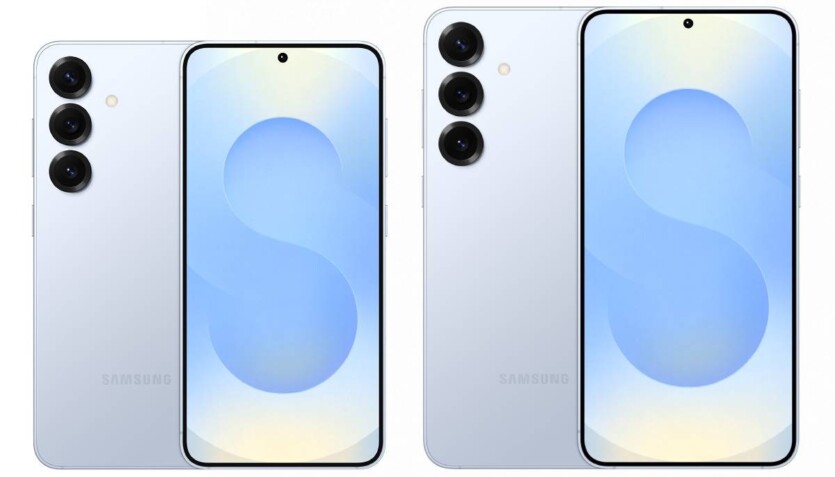
Samsung has officially launched its new flagship Galaxy S25 smartphone lineup. And while they may not seem so revolutionary at first glance, these new Galaxy S25 and S25+ models offer significant improvements over their predecessors.
To begin with, the Samsung Galaxy S25 and S25+ will feature the new Snapdragon 8 Elite for Galaxy processor, which promises 37% faster CPU performance, 30% more GPU power, and 40% faster NPU compared to the previous generation. As a result, Galaxy S25 series smartphones are able to handle more artificial intelligence tasks on the device, including processing queries that were previously performed in the cloud.
Second, Samsung has finally abandoned 8 GB of RAM. Now 12 GB is the new standard for this pair of smartphones. In fact, this 12 GB will be the only available option – no more are being brought in. In terms of storage, the Galaxy S25 remains the only one in the series that has only 128 GB of internal storage as standard, while the rest of the lineup has 256 GB available.




With Samsung’s focus on improving performance, the S25 series brings 40% larger vapor chambers and «specialized thermal interface material» for further improved cooling. Both phones are IP68 rated and can withstand submersion to a depth of 1.5 meters for half an hour.
Samsung Galaxy S25 and S25+ have the same screen sizes as last year’s models: 6.2 inches FHD+ for the smaller one and 6.7 inches QHD+ for the larger one. The displays use LTPO OLED panels with a variable refresh rate of 1-120 Hz.
At the same time, Samsung engineers were able to make both phones 0.4 mm thinner and several grams lighter (height and width remained virtually unchanged). And this is without reducing the battery capacity (although there was no increase): 4000 mAh in the S25 and 4900 mAh in the S25+. The charging power is also unchanged: 25W (50% in 30 minutes) for the S25 and 45W (65% in 30 minutes) for the S25+. Qi wireless charging (Qi2 is not mentioned) has a power of 15 watts.




Cameras have received updates, but they are concentrated in the ProVisual Engine. Samsung hasn’t confirmed the sensor model numbers yet, but we have basically the same 50MP in the main module, 10MP with 3x zoom for the telephoto module, and 12MP in the ultra-wide-angle camera that has been used since the S22 series. The 12-megapixel selfie camera is also unchanged.
This year, the S25 series allows you to record video with 10-bit HDR as standard (previously available but disabled) and adds the Galaxy Log feature (its own version of the log profile). There is also better noise reduction for night videos. Audio Eraser can remove unwanted noise from videos. It divides the sound into different categories — voices, music, wind, nature, crowd, and noise — and you can keep only what you want. For photos, there’s an Expert RAW feature that adds a virtual aperture that lets you control the depth of field. At the same time, Portrait Studio has been improved and now allows users to create realistic facial expressions.
Wireless connectivity is represented by 5G (including mmWave in some regions), Wi-Fi 7 and Bluetooth 5.4. Galaxy S25 still does not have UWB.





Samsung has paid a lot of attention to the software updates and features offered by the Galaxy S25 line. This series offers users One UI 7 and will be supported by software updates for 7 years. Security has been improved with the introduction of post-quantum cryptography – meaning that data encrypted today will be secure even in the future when quantum computers start decrypting older cryptography.
Personal Data Engine powers AI functions on your device, such as using simple spoken language to find an old photo from your gallery. The AI will understand what you want and find it for you, without leaking data from the device. The new Now Bar on the lock screen will offer suggestions from Now Brief, things that may be contextually relevant throughout your day.





By pressing and holding the side power button, you can talk to Gemini. This works in all Samsung and Google apps, as well as some third-party apps like Spotify. By the way, all S25 phones come with 6 months of Gemini Advanced for free (including 2 TB of cloud storage offered by Google).
Circle to Search has been updated to recognize phone numbers, emails, URLs, and more. Call Transcription will summarize and organize your call history, and Write Assist will summarize and automatically format your notes. Drawing Assist can turn your sketches or text descriptions into images.
In Ukraine, the Galaxy S25 series is available for pre-order from today – January 22. Galaxy S25 and Galaxy S25+ are available in colors: Silver Gray, Sapphire Blue, Ice Blue, and Mint at a price starting at UAH 41999.
Source: gsmarena

Spelling error report
The following text will be sent to our editors: